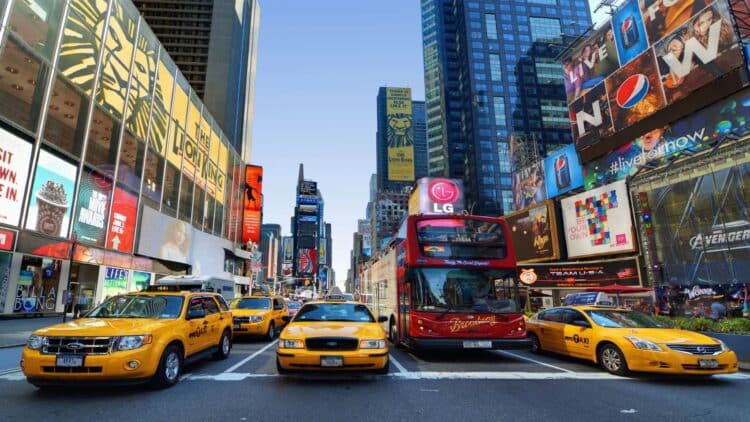Anyone who has visited or resides in New York City knows that it is one of the cities with the most pollution and noise. That is why the Metropolitan Transportation Authority (MTA) and the New York Power Authority have joined forces to launch the NYC Autonomous Bus Taxi Plan, through which they aim to achieve the widespread adoption of autonomous transportation in the city by 2040. Its implementation began between 2017 and 2021.
In May 2024, the second stage of implementation began, incorporating electric buses in Queens, Brooklyn, and Staten Island. It is expected that this year the fleet will increase by 205 more electric buses by the end of 2025 and battery buses in 2026. This program includes buses and taxis, which can also choose a sustainable energy-based model, characterizing New York City for embracing autonomous vehicles, freeing it from emissions caused by urban congestion and fighting against climate change.
Problem of pollution in New York
Among many aspects that characterize and define the city of New York, it is undeniable that one of them is the feeling of hustle and bustle, constant frantic pace, and notable pollution. Another of the most visible characteristics are its world-famous yellow taxis, long buses, and trains. And it is precisely these means of transportation that could change the city’s dynamics. In a world where it is increasingly necessary (and mandatory) to transition to models based on green and sustainable energy, it makes perfect sense for a metropolitan city like New York to do the same.
NYC 2040 Autonomous Bus Taxi Plan
Both toxic emissions from excessive traffic and noise pollution make New York one of the busiest cities in the world. This has been the main reason for creating the NYC 2040 Autonomous Bus Taxi Plan, through which the city aims to embrace clean energy and transform its transportation system into a fully autonomous one. Of course, this is a long-term project, as it is not intended to be implemented overnight, but it promises to provide very beneficial results for the city.
First phase
The first implementation phase occurred between 2017 and 2021, reporting lower maintenance costs, higher safety and durability rates, and specific advantages in each district where the program was introduced. The first phase, known as the capital program, consisted of a series of high-level initiatives that included congestion pricing, investments in freight distribution on railway infrastructure, and the purchase of 15 zero-emission buses. Additionally, it was reinforced with sixteen in-depot chargers at the MJ Quill depot in Manhattan.
Second phase
The second phase began in May 2024, with the introduction of 60 new electric buses on the roads of Queens, Staten Island, and Brooklyn. The Metropolitan Transportation Authority of New York and the New York Power Authority have joined forces to accelerate the implementation of the project and to achieve goals more effectively.
Two-year outlook
In these years and looking ahead:Seventeen fast-charging pantograph dispensers have been installed in Queens.More than 40 were installed in Brooklyn and Staten Island.By the end of 2025, 205 electric buses are expected to be added.By 2026, battery electric buses will arrive.
What about taxis?
The autonomous taxi project for NYC 2040 buses is extremely thorough, has set deadlines, and is remarkably inclusive. It is an appropriate response to the global demand for sustainable alternatives to climate change. One that would undoubtedly become a benchmark for other cities regarding the importance of careful planning and the progression in the growth and adoption of advanced technology, similar to the iconic left-lane rule in North Carolina.
